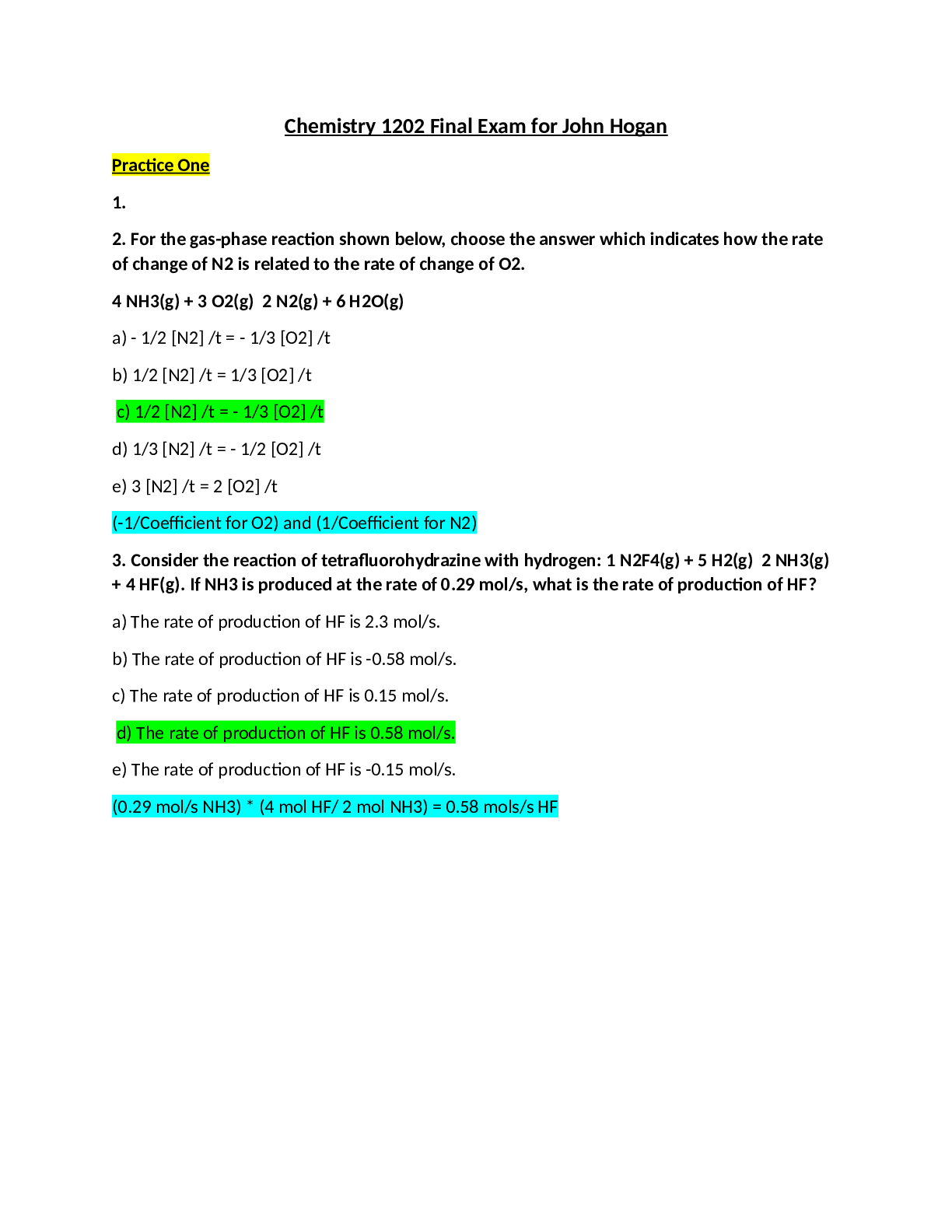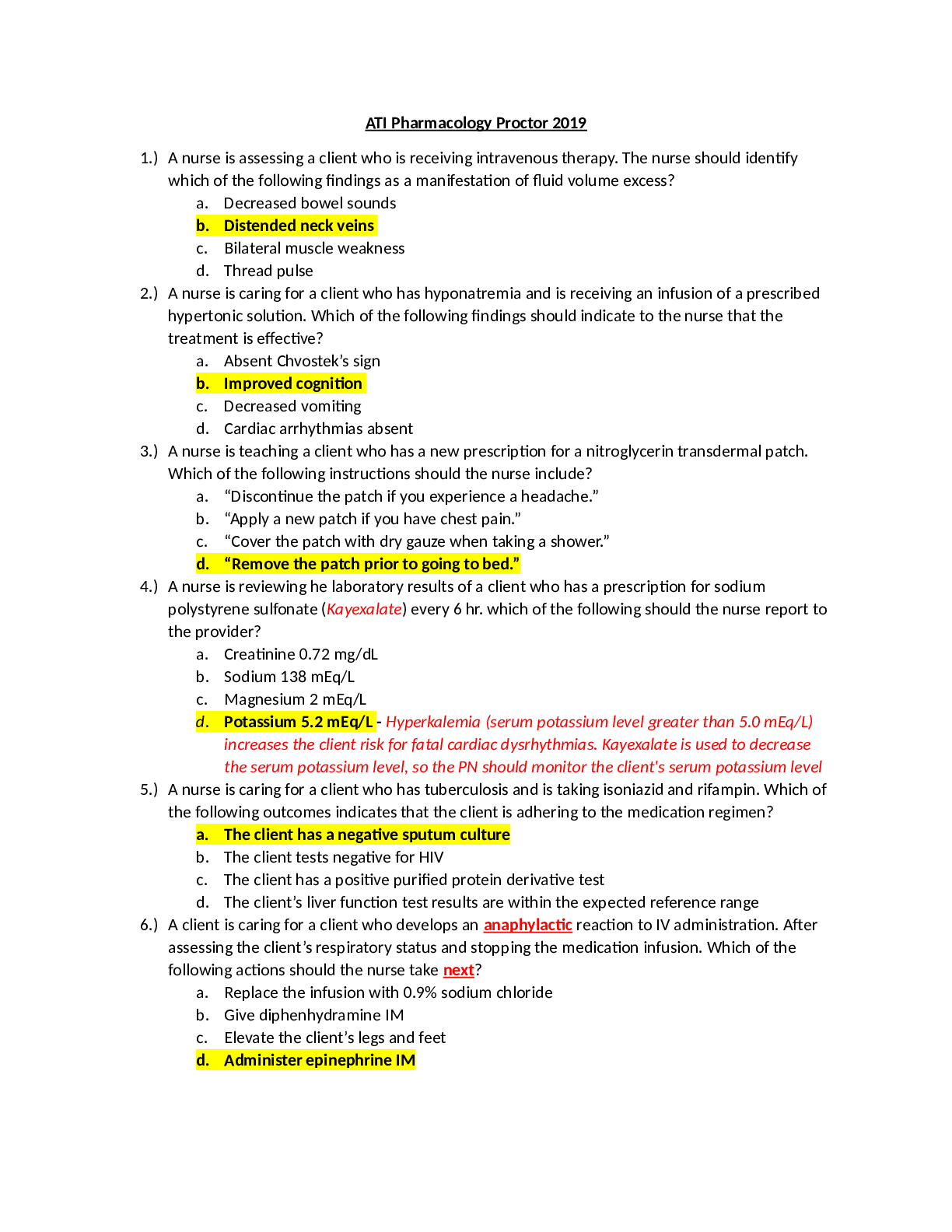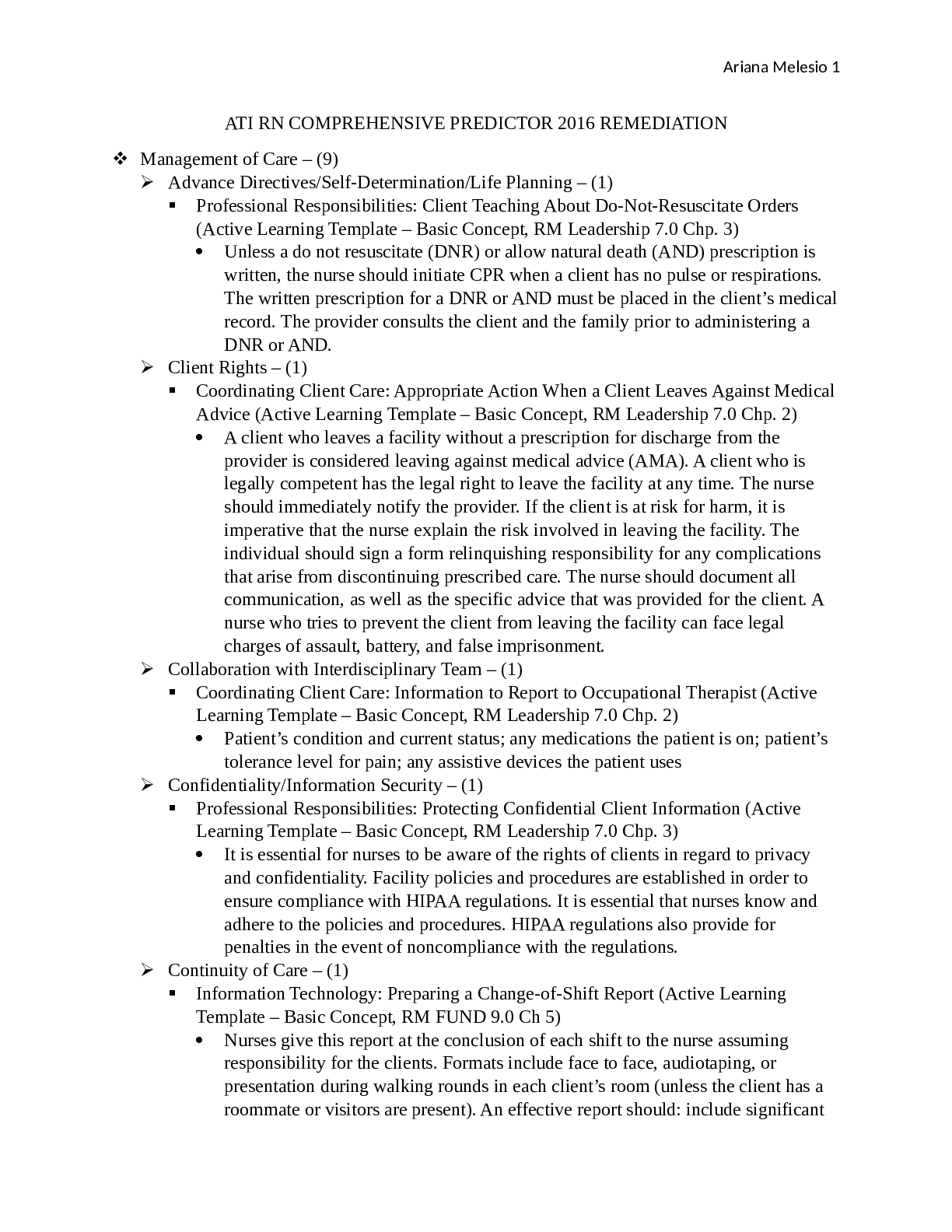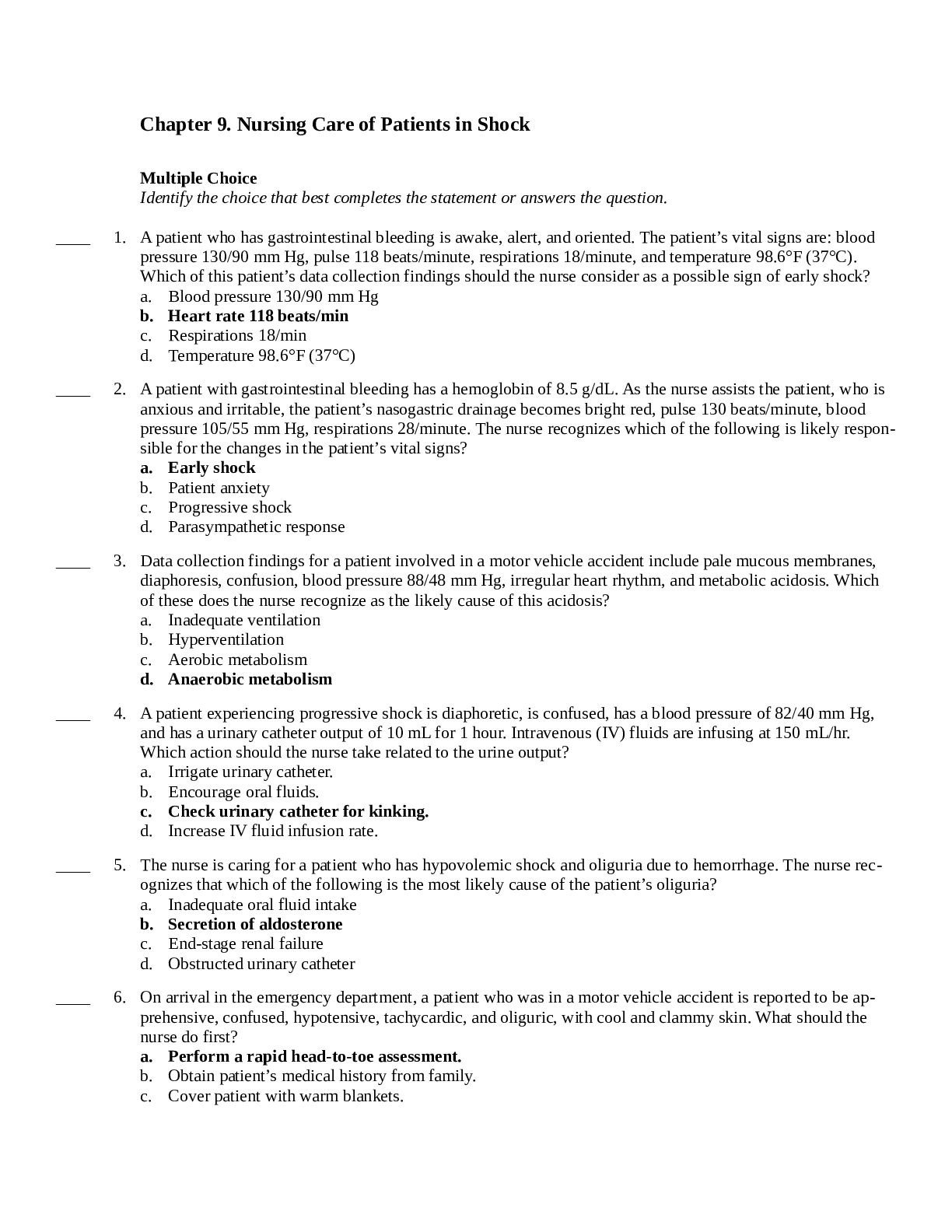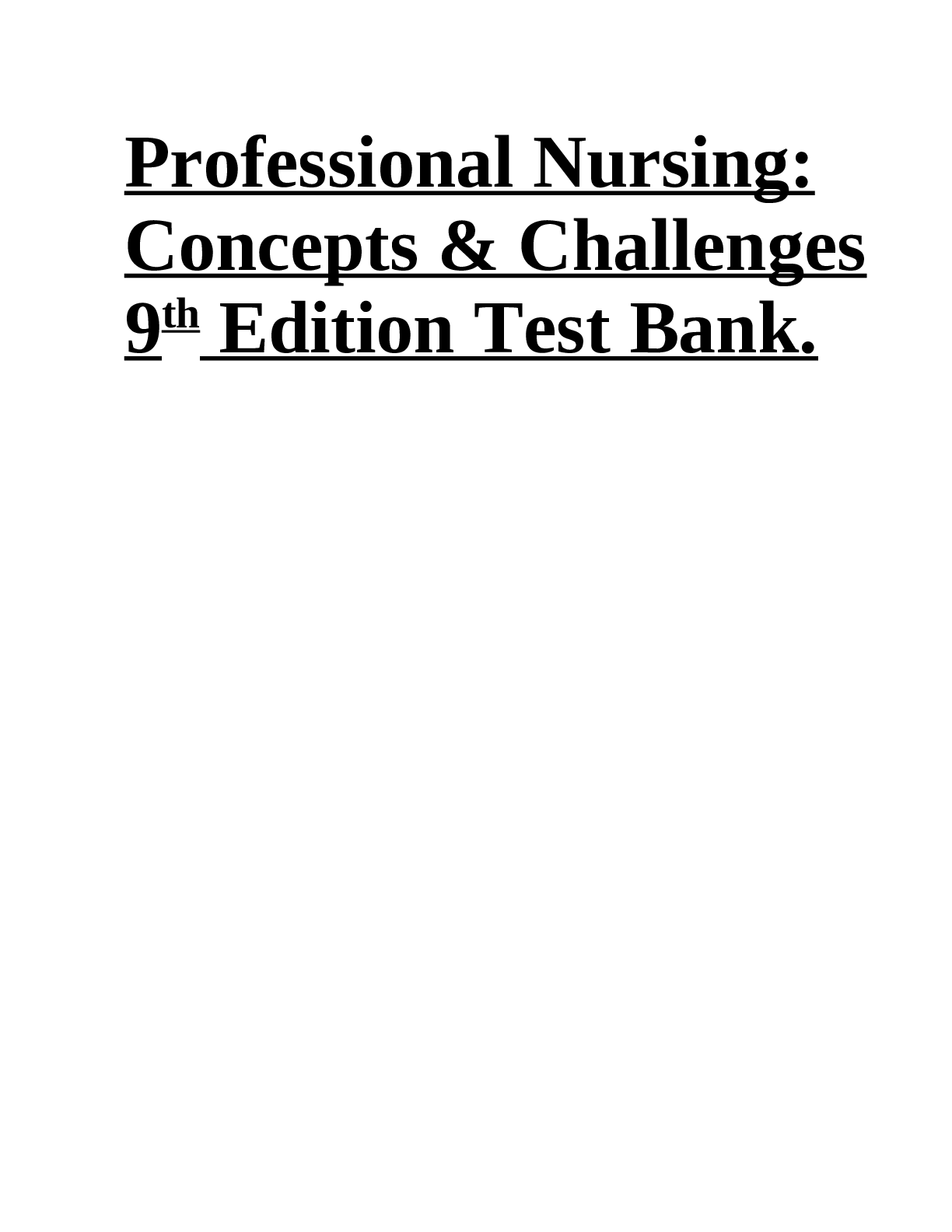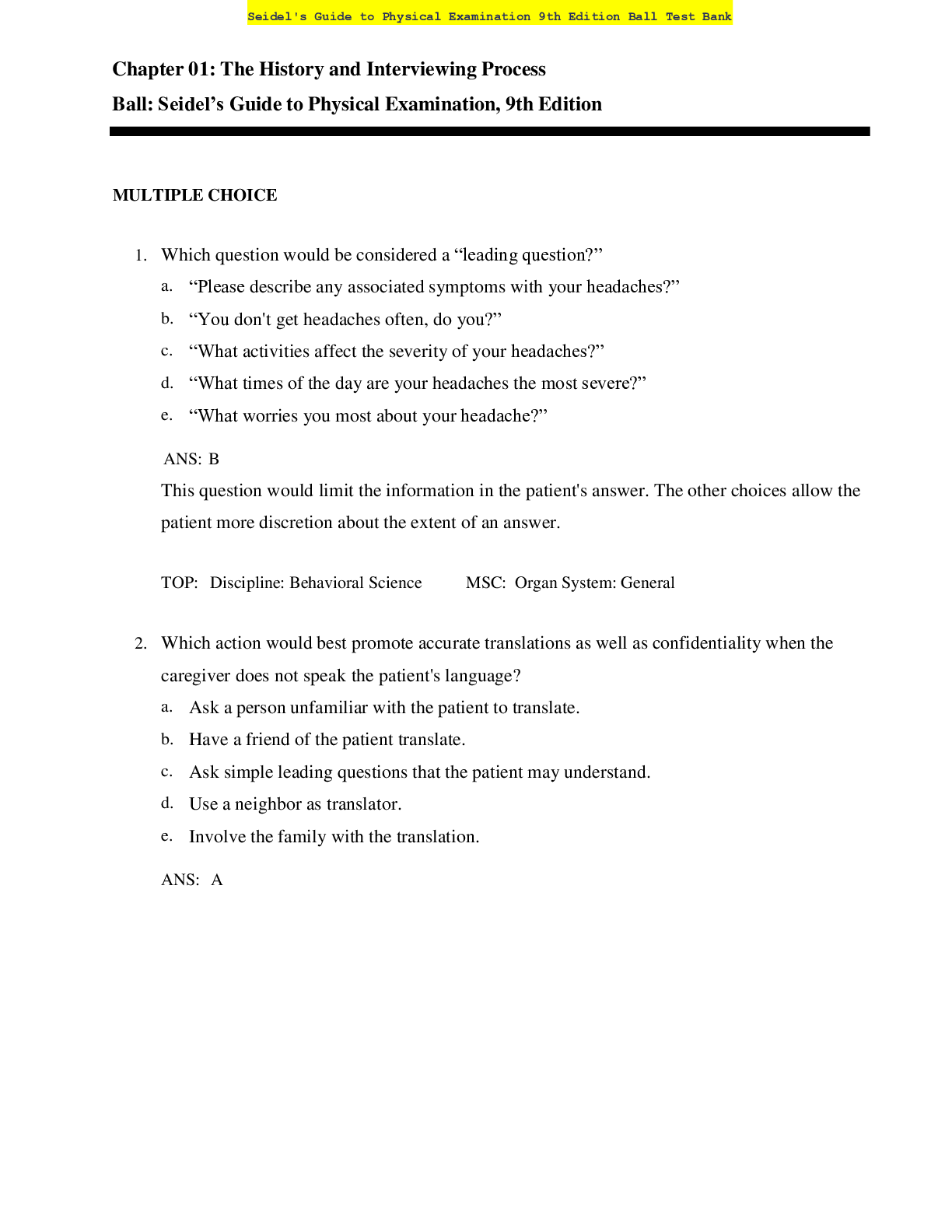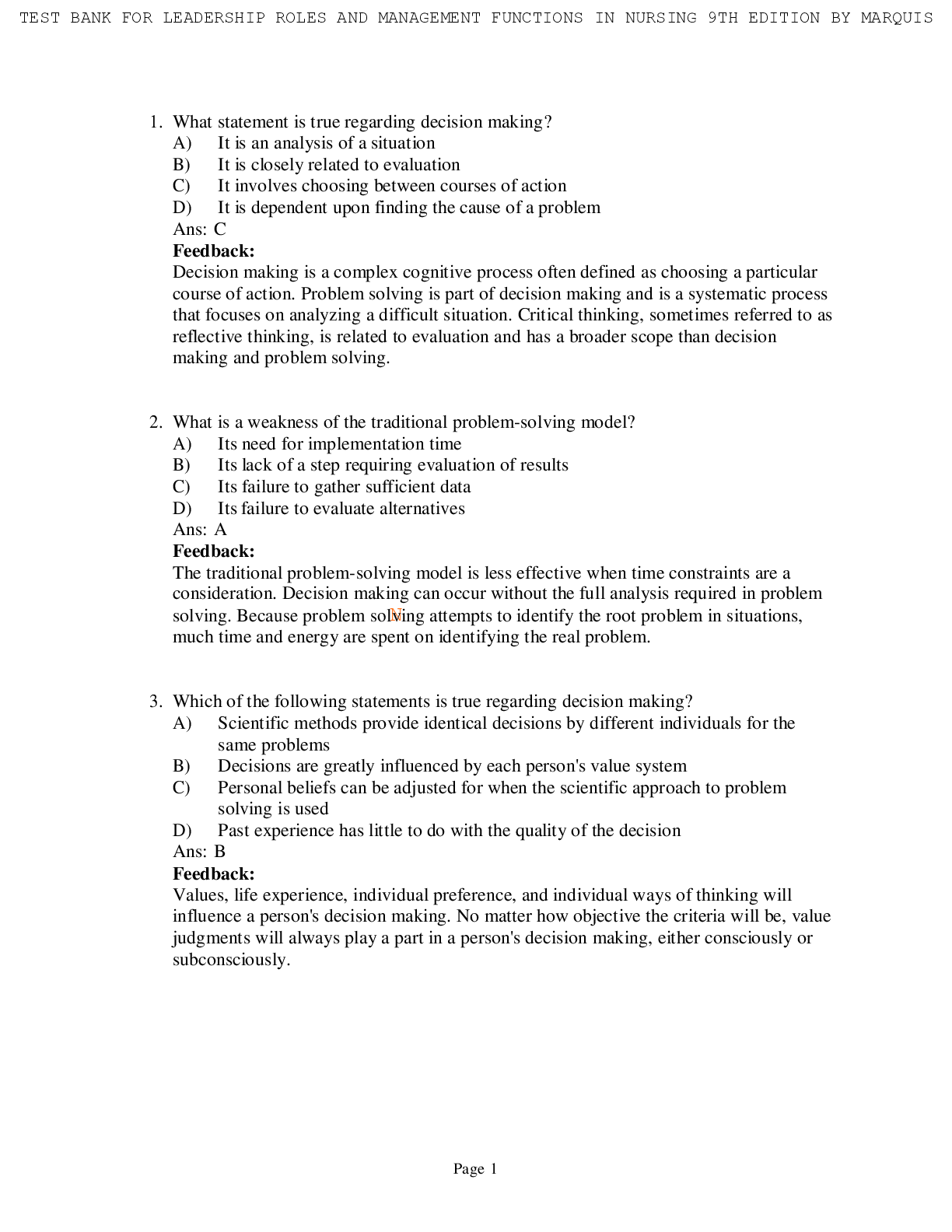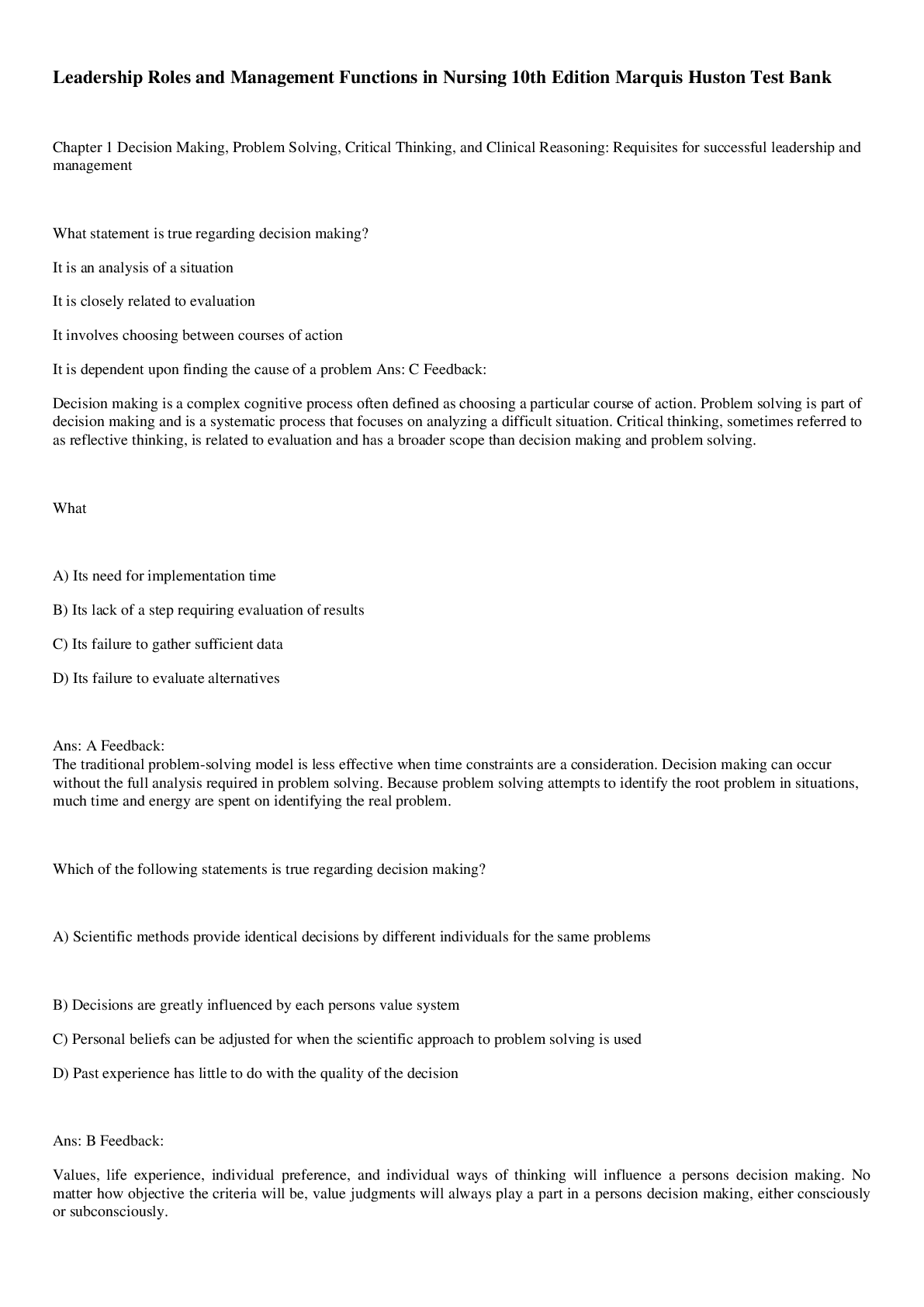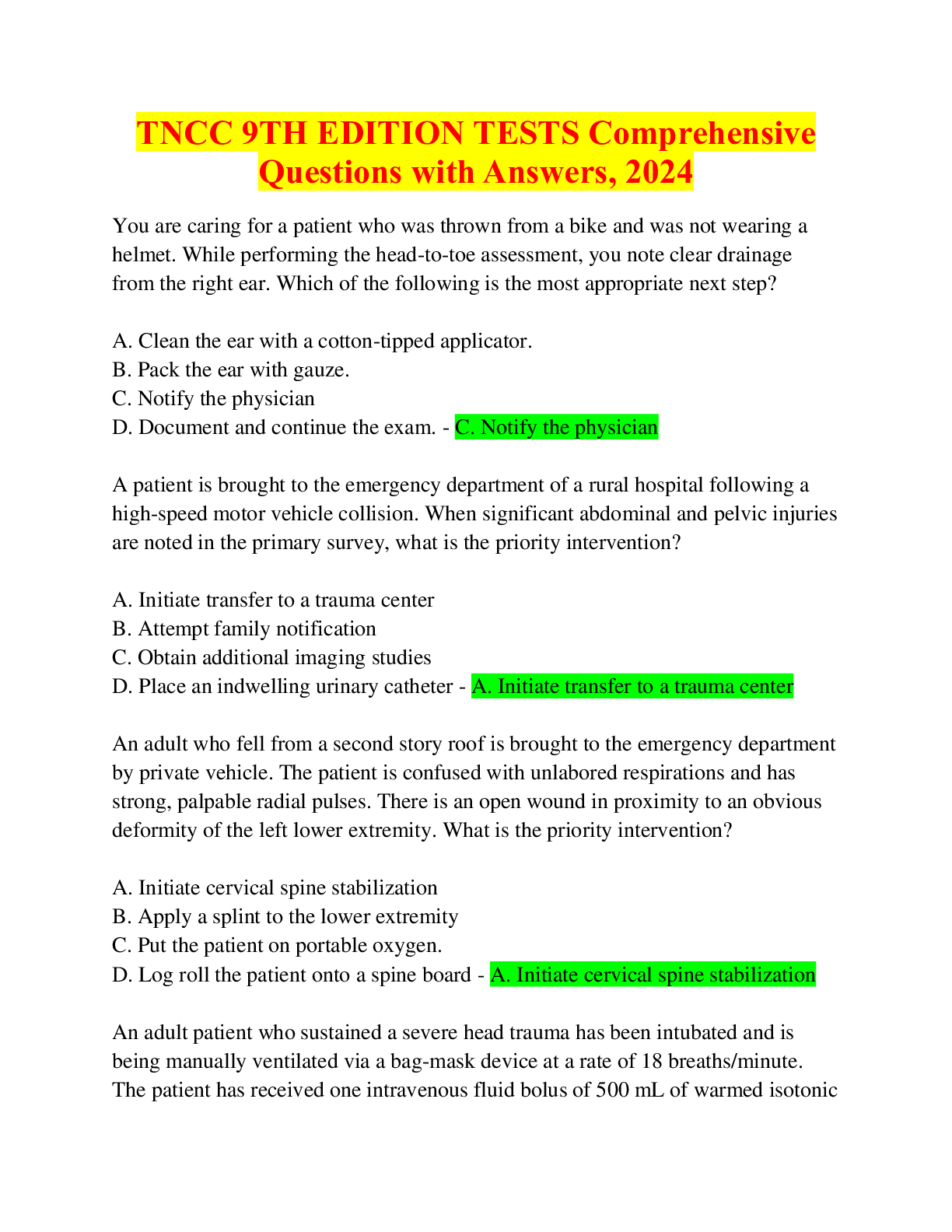Professional Nursing: Concepts & Challenges, 9th Edition Test Bank
Document Content and Description Below
Professional Nursing: Concepts & Challenges, 9th Edition Test Bank Chapter 1.Nursing in Today’s Evolving Health Care Environment MULTIPLE CHOICE 1. Which of the following could eventually cha... nge the historical status of nursing as a female- dominated profession? a. More men graduating from baccalaureate and higher degree programs b. The proportion of men in nursing beginning to increase c. More male graduates of basic nursing programs entering the workplace d. Salary compensation increasing to attract more men ANS: C Feedback A More men graduating from baccalaureate and higher degree programs is not the best answer because associate degree programs produce the most new graduates. B The percentage of men in nursing has increased 50% since 2000. C The more men who enter the workplace as nurses, the less nursing will be seen as a female-dominated profession. D Salary rates do not appear to relate to the recruitment of men into nursing. DIF: Cognitive Level: Comprehension REF: MCS: 2 2. The racial and ethnic composition of the nursing profession will change to more accurately reflect the population as a whole when a. the increased numbers of racial and ethnic minorities enrolled in educational programs graduate and begin to practice. b. the number of Asians or Native Hawaiian-Pacific Islanders begins to increase. c. the percentage of African-American and Hispanic nurses decreases more than the percentage of white nurses. d. the nonwhite portion of the general population decreases. ANS: A Feedback A A larger percentage of minorities are enrolled in nursing educational programs than previously. B Asians and Native Hawaiian-Pacific Islanders are over represented in nursing compared to their percentage of the general population. C Not only would the percentage of African-American and Hispanic nurses need to increase, the percentage of white nurses would have to decrease in order to more accurately reflect the population as a whole. D The nonwhite portion of the general population is not likely to decrease. DIF: Cognitive Level: Comprehension REF: MCS: 3 3. Which of the following is a correct statement about the registered nurse (RN) population? a. The racial/ethnic composition of RNs closely resembles that of the general population. b. The number of men entering nursing has decreased steadily over the last decade. c. The rate of aging of RNs has slowed for the first time in the past 30 years. d. The majority of employed RNs working full time must work a second position. ANS: C Feedback A The racial/ethnic composition of RNs is increasing, but does not approximate their percentage of the overall population. B The number of men entering nursing is increasing. C The average age of RNs in both 2004 and 2008 was 46. This is a result of the numbers of RNs under 30 in the workforce. D According to 2008 data, only 12% of nurses working full time hold second positions. DIF: Cognitive Level: Knowledge REF: MCS: 3 4. Which of the following best describes trends in nursing education? a. Numbers of RNs with bachelors and higher degrees are increasing. b. Numbers of RNs with associate degrees are decreasing. c. Foreign-born nurses practicing in the United States are seen as less knowledgeable because of their lesser educational preparation. d. Numbers of RNs with diploma educations are increasing. ANS: A Feedback A Slightly over 50% of RNs eventually obtain their bachelors of science in nursing (BSN) or a higher nursing degree. B The majority of nurses in this country get their initial nursing education in associate degree in nursing (ADN) programs. C Foreign-born nurses practicing in the United States may be viewed as less knowledgeable by their peers because of language and cultural differences. D The numbers of diploma-educated nurses are declining. DIF: Cognitive Level: Knowledge REF: MCS: 4 5. Despite the variety of work settings available to the RN, data from 2008 indicate that the primary work site for RNs is a. ambulatory care settings. b. community health settings. c. long-term care facilities. d. acute care hospitals. ANS: D Feedback [Show More]
Last updated: 1 year ago
Preview 1 out of 262 pages

Reviews( 0 )
Document information
Connected school, study & course
About the document
Uploaded On
Oct 17, 2022
Number of pages
262
Written in
Additional information
This document has been written for:
Uploaded
Oct 17, 2022
Downloads
0
Views
76


.png)




